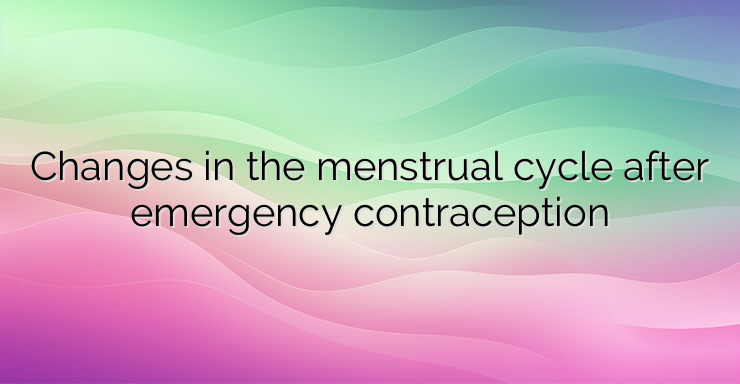The most effective method of preventing unwanted pregnancy after unprotected sexual intercourse is emergency hormonal contraception by taking an oral medication – Levonorgestrel. However, despite the wide distribution and mass intake of this medicinal product, it is associated with some changes in the normal menstrual cycle of women. In an analysis of data provided by 235 women, various menstrual changes were observed in the monthly cycle, such as a change in its normal length and others. Most of these changes disappear during the next menstrual cycle. Three of the women became pregnant, indicating a 1.3% failure rate of emergency contraception. Subsequent consultations with the remaining study participants revealed that the normal length of their menstrual cycle averaged 28 days, with a range that varied from 23 to 33 days. The average normal duration of women’s menstruation is 4 days, and more than half of those included – 53.2% – report pain – dysmenorrhea. Regarding the external characteristic of menstruation, 78.6% of women defined it as red and 17.1% as dark, 3.1% reported the presence of blood clots, 1.1% as sticky and 26.5% as spotting before menstruation. After taking the emergency contraceptive, these percentages are slightly changed. For 21% of women, the days of the menstrual cycle are less by two or more days, and for 24% they are more. In those who took the oral contraceptive in the preovulatory phase of their cycle, it was shorter by about 1 day, and in women who took it in the postovulatory phase, it was longer by nearly 2 days. It was also noticed that younger women – under 20 years of age and those with a shorter normal length of the monthly cycle – under 26 days, the menstrual cycle is significantly longer. After taking the contraceptive, women report darker and sticky menstrual blood. As individual changes are characteristic of 15% of them. A significant decrease in cases of dysmenorrhea was noted. 14.7% of women experience bleeding between periods that lasts from 1 to 7 days. It is lighter than regular menstrual bleeding, but does not differ in appearance from it. Bleeding between periods in some women occurs 8 hours after taking the emergency contraceptive, and in others after 4 days. It is more often observed in women whose intercourse was during the first days of the menstrual cycle, a few days before the supposed date of their ovulation. During the next menstrual cycle, the changes that appeared are significantly normalized. In conclusion, levonorgestrel emergency contraception is associated with significant but transient changes in menstrual patterns in a large proportion of women who take it. Sources: https://www.ncbi.nlm.nih.gov/labs/pmc/articles/PMC1934349/


Leave a Reply